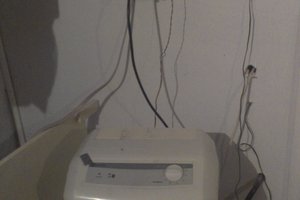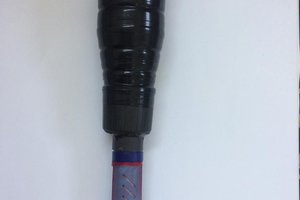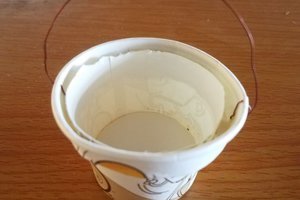Introduction
In this project, we will see the simplest way of making Water Diya at Home. The concept of water Diya came from oil Diya but the unique features of water Diya is, It glows while pouring water on it.
Advantages Of Water Diya
The main advantage of water Diya is there is no requirements of oil or extra power supply in it. And the next advantage is it turns to be cost effective and easy to handle.
Bill Of Materials
| SN | COMPONENTS NAME | DESCRIPTION | QUANTITY | |
|---|---|---|---|---|
| 1 | Lithium Cell | 3 volt | 2 | https://amzn.to/3DhZE1q |
| 2 | Glue Gun | with glue stick | 1 | https://amzn.to/3VY8Ob5 |
| 3 | Transistor | BC547 | 1 | https://amzn.to/3seMLPu |
| 4 | Diya | Normal | 5 | https://amzn.to/3EWDUK1 |
| 5 | Led | 5mm | 5 | https://amzn.to/3CKlQzO |
PCB Manufacturer
The pcb of this project is manufactured by JLCPCB. The reasons to choose JLCPCB for pcb manufacturing are:
- Higher Quality
- Lower Cost
- Faster Delivery
If you want to order your pcb from jlcpcb just go through the link below:

Science Behind It
We know that water itself is bad conductor of electricity but when we add salt in it it turns to be good conductor of electricity.

The bulb glows only when salt was added to water, because salt (NaCl) contains Na+ and Cl- ions. When electricity passed through the salt solution, salt got dissociated into Na+ and Cl- ions. As a result, the Na+ ions start moving towards the negative terminal or cathode and the Cl- ions start moving towards the positive terminal or anode. When Na+ ions reach cathode, they gain electrons and when Cl- ions reach anode, they lose electrons. Hence, the electrons start moving inside the salt solution and starts passing through them and the bulb glows. On the contrary, pure water does not contain any electrons and hence the circuit was incomplete for the bulb to glow properly.

All the Circuit is made and arranged in such a way that two conducting wires seems to be separated inside Diya. Now when we pour water inside the Diyo it forms conducting path between Diyo. Then current flows through the wires and our led will glow.

Circuit Diagram

Above is the circuit diagram of this project. As shown in the figure, connect the collector of your BC547 Transistor to negative terminal of your LED. Now, Take one 3 volt lithium cell and connect it positive terminal to anode terminal of LED, also connect negative terminal to emitter of the transistor. Make the positive terminal of led as probe 1 and base of the transistor as probe 2. Finally attach all the circuit to diya making two probe of the circuit inside the diya.
Now when we pour water inside the diyo. It will glow.
 electronicsworkshops
electronicsworkshops
 Anteneh Gashaw
Anteneh Gashaw
 ameyring
ameyring
 Wasim Sahu
Wasim Sahu